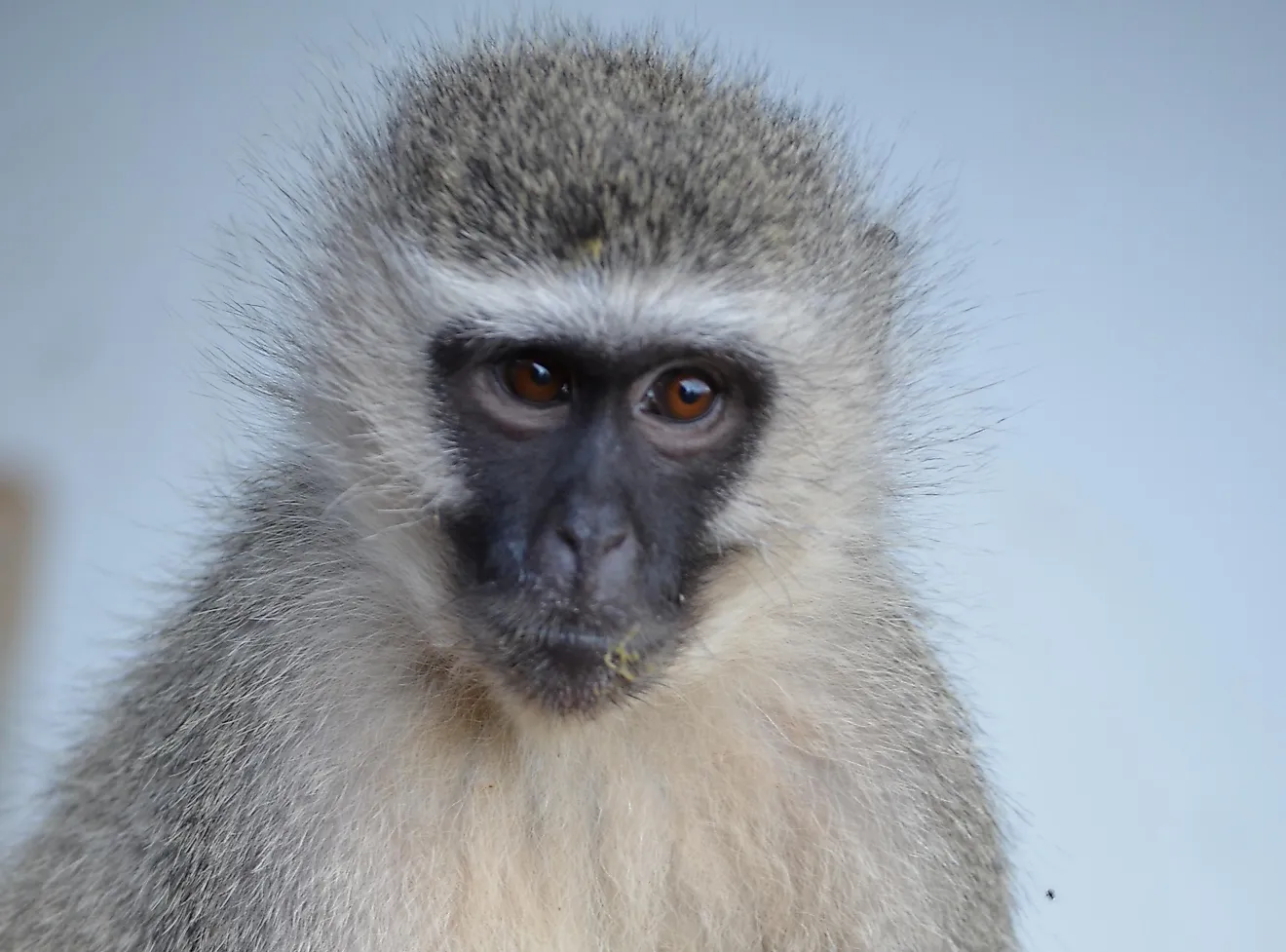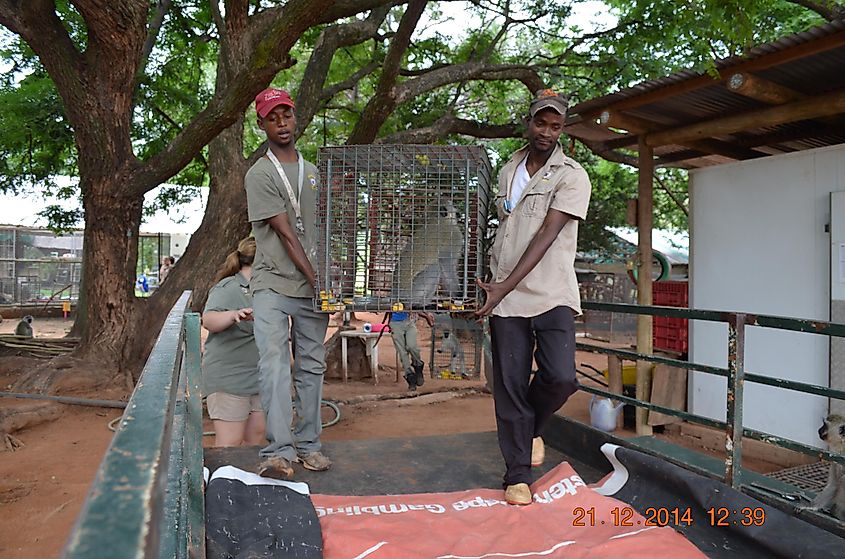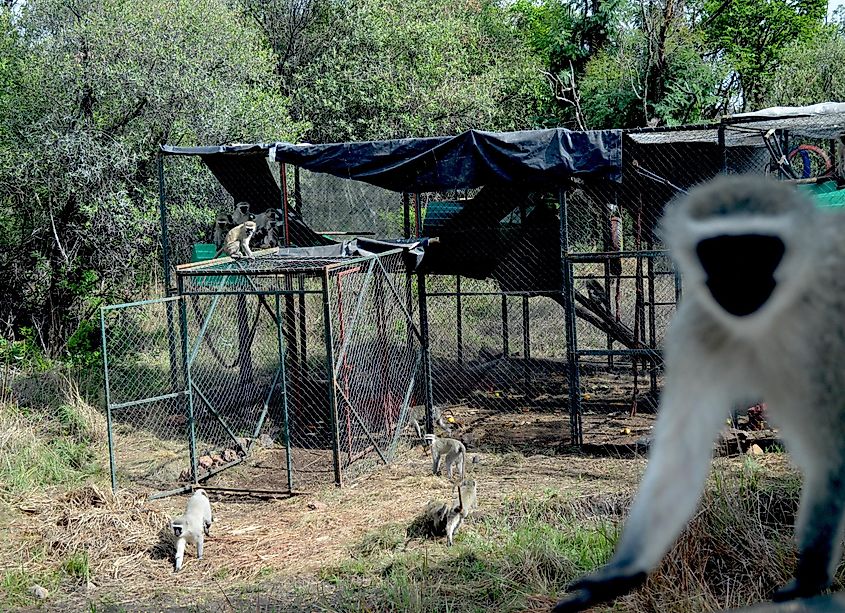The Vervet Monkey is of “Least Concern”, But Should It Be?

Despite their big personalities, vervet monkeys, also just called vervets, are seldom spoken about outside of their native southern and eastern Africa. Mischievous and social, vervets are best known for their unique and human-like dispositions. The vervet is also relatively numerous in population, which may make them a curious choice for conservation efforts at first glance. After all, shouldn’t a high population of an animal translate into a secure status?
Of course, in nature, correlation is not always so simple, and the vervet monkey is no exception. To further explain more about the issues surrounding these lovable creatures, World Atlas spoke with Sue Holme, a Director of the Bambelela Wildlife Care NPC.
Bambelela, whose name means “to hold on” in Zulu, rescues, rehabilitates and releases vervet monkeys, chacma baboons, and the lesser bush baby, three of the five types of primates occurring in South Africa. Located in Limpopo, South Africa’s northernmost province, Bambelela has been working hard to help wildlife since its establishment in December 2003 by conservationist Silke von Eynern.
Vervet Monkeys: From The Eyes Of The Caregiver
Over the years, Sue Holme has been fully involved with raising orphaned vervet monkeys, from the forming of troops through to rehabilitation and release of the monkeys. When asked about what it is that makes the vervet so special, Ms. Holme was easily able to pinpoint some characteristics:
“Their close family bonds. Their individuality, their intelligence, and resourcefulness. Their sense of fun. Hugely entertaining to watch. Their similarity to us.”
“Look into a vervet monkey’s eyes and you look into their soul,” she added.
Although this is part of why the rescue has a special focus on vervet monkeys, there are other factors contributing to the need for vervet protection that are not so pleasant.
“Until comparatively recently, vervet monkeys were labeled as “vermin” in many provinces in South Africa.” Holme explained. “Over the years, they have been indiscriminately shot and poisoned, as well as captured for research purposes.”
Determining population numbers of vervets is also a challenge.
“No government research or census has been conducted to determine the exact population of the species in the wild. Estimates suggest that there are about 250,000 vervet monkeys in South Africa, but nothing is known for certain. Vervet monkeys are not a flagship species and do not have the allure of the rhino or the leopard. Hence, by the time they are seen as threatened/endangered, it may well be too late to save them.”
Human-Vervet Monkey Conflict
Like many other species around the world, vervet monkeys are negatively affected by human behavior. What's more, there are particular patterns of behavior that are unique to the vervet that may unfortunately put them in the path of humans in a prominent way.
Sue Holme elaborated on this, saying: “Vervet monkeys are territorial in nature. Females do not leave their natal troops. The knowledge of seasonal food and water sources is passed down through the generations. They are not going to leave their territory just because humans have built homes and shopping malls or changed the land into agricultural farms. With limited natural food sources available, they seek out other sources – rubbish bins, human homes or the farmers’ crops. This increases their encounters with humans and the resulting conflict leads to the death of the monkeys because it takes little effort to kill, far more effort for non-lethal solutions.”
Saving The Vervet Monkeys: a List of Solutions
Luckily for both humans and vervets, there are a number of ways in which the two species can move forward in a way that is more beneficial to both sides. Sue Holme offered the following tips for a more peaceful human-vervet coexistence:
Solutions for Guest Lodges and Home-owners
“Guest Lodges and homes can put fly screens on windows and doors, secure rubbish bins, and put netting over vegetable gardens. Food should be kept out of view and monkeys must not be fed, especially not from the hand. Spraying water with a hose pipe or the use of water pistols are simple, effective, and non-lethal ways to deter these monkeys.”
Solutions for Farmers
“Agricultural farmers can set up alternative feeding spots away from their crops with low-quality produce, and then use non-lethal methods to discourage the vervet monkeys from raiding their crop fields. A sudden, loud noise can be used to frighten them away or alternatively the use of slingshots could be effective. No need to aim at the vervet monkeys, just close enough to give them a fright. They will quickly learn that if they want to eat undisturbed, they must go to the alternative feeding spot. Planting of indigenous trees, grasses and shrubs at boundaries – after all, the farmer removed all the natural vegetation in order to plant his crops! Greasing of poles will prevent easy access via telephone cables.”
Although the solutions mentioned above demand long-term commitment, mass-scale awareness programs, and a change of hearts to be really effective in saving the vervet monkeys, organizations like Bambelela are also taking immediate actions to save the individuals who are already a victim to the human-animal conflict.
The Work of Bambelela NPC
The team at Bambelela rescues orphaned or injured vervet monkeys, rehabilitate them, and release them into the wild. Such processes are, however, highly challenging for these dedicated conservationists.
“The rescue of an orphan is always emotionally draining.” Holme shared. "They have lost their family, seen their mother killed and you can see that in their eyes and in their behavior. A newly orphaned baby will constantly call for its mother, a heart-breaking sound. Former pets are a bigger challenge: in effect, they have been orphaned twice (natural mother and the human family who raised them, and can no longer cope with their behavior) and were probably kept in miserable conditions, alone, chained up or in a small cage. Many suffer serious psychological or physical damage.”
The difficulty of the conservation work done at Bambelela does not end there.
“Rehabilitation takes 4 years or more, since every vervet monkey needs a new family and needs to feel part of the troop – if they don’t remain with the troop once released, they will not survive, so strong family bonds need to be formed. We do not stop the females in a rehabilitation troop from having babies, these new-borns within a troop help family bonds to develop. Release sites must be found, fully researched, and permits for transport and release have to be sought. A temporary cage at the release site needs to be built and then two members of staff must live in the field for 2 to 3 months to monitor the troop settling into their new home. Regular visits to the release site will be made over the following months just to ensure they fully adapt to living free.”
The team at Bambelela also conduct education programs to raise awareness among the local farmers and private property owners about the ways they can avoid conflict with the vervet monkeys.

Caretakers at Bambelela load the troop members for release in the wild. Photo credit: Bambelela NPC.

It is hard to ignore that many threatened species living in our world today once had massive and widespread populations and most have experienced steep population declines in the matter of only a few decades. Hopefully, with the timely actions and the dedicated efforts of vervet monkey conservationists like the team at Bambelela, it will be possible to ensure that the vervet monkey can stay mischevious for time to come.
Those interested in seeing the great work done by Bambelela can visit their website here.
**
Dr. Oishimaya Sen Nag is a freelance writer and editor from Kolkata, India. She loves to participate in wildlife conservation activities and to explore new places and cultures.











